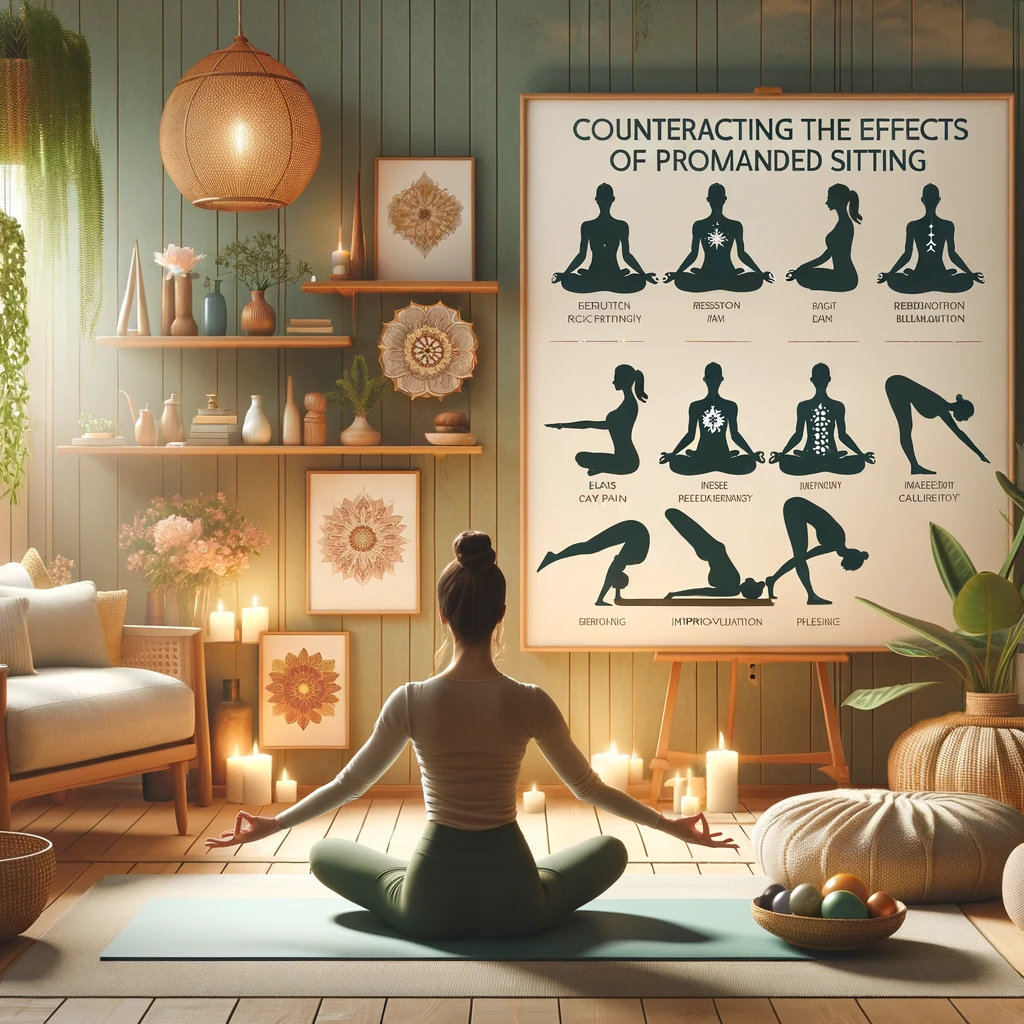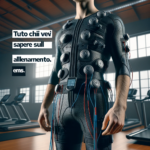7 Yoga Positions to Counteract the Effects of Prolonged Sitting

March 22, 2024
Prolonged sitting can cause a number of health problems, including back pain, muscle stiffness, reduced circulation and obesity. Fortunately, the practice of yoga can help counteract these negative effects. In this article, we will explore seven yoga postures that can be helpful in alleviating the symptoms associated with prolonged sitting.
1. Cat-Bacca Posture (Marjaryasana-Bitilasana).
The Cat-Cow pose is a combination of two yoga postures-Marjaryasana (cat pose) and Bitilasana (cow pose). This posture helps stretch and relax the spine, improving flexibility and relieving back pain. Here is how to perform this posture:
- Start on all fours, with your hands aligned with your shoulders and your knees aligned with your hips.
- Inhale and bring the chest forward, pushing the butt up and lowering the chin toward the chest.
- Exhale and reverse the movement, arching the back upward and lifting the head toward the ceiling.
- Repeat the movement smoothly for a few minutes, following the rhythm of your breath.
This position helps stimulate the spine and relieve tension in the lower back.
2. Tree Posture (Vrikshasana).
The Tree pose is an excellent posture for improving balance and stability, two skills that are often compromised by prolonged sitting. Here’s how to perform this posture:
- Start standing, with your feet firmly anchored on the ground and your arms along your sides.
- Lift one foot and rest the sole against the inner thigh or calf of the other foot.
- Bring your hands in prayer to the center of your chest or extend them upward over your head.
- Hold the position for 30-60 seconds, breathing deeply.
- Repeat on the opposite leg.
The Tree pose helps improve balance, concentration and spinal stability.
3. Bridge posture (Setu Bandhasana).
The Bridge posture is an excellent position for relieving tension in the lower back and pelvis. Here is how to perform this posture:
- Lie on your back, bend your knees and bring your feet close to your buttocks.
- Place your arms along your sides, palms facing down.
- Press your feet and arms into the mat as you lift your pelvis upward.
- Hold the position for 30 to 60 seconds, breathing deeply.
- Slowly lower your pelvis toward the floor and repeat the position.
The Bridge position helps open the chest, lengthen the spine and improve hip flexibility.
4. Head Down Dog posture (Adho Mukha Svanasana).
Head Down Dog posture is one of the most well-known and beneficial yoga postures. This posture helps stretch and strengthen the whole body, improving posture and blood circulation. Here’s how to perform this pose:
- Start on all fours, with your hands aligned with your shoulders and your knees aligned with your hips.
- Lift your knees off the floor and push your pelvis upward, stretching your arms and legs.
- Keep your weight evenly distributed between your hands and feet, pushing your chest toward your thighs.
- Breathe deeply and hold the position for 1 to 3 minutes.
- To exit the position, bend your knees and return to all fours.
The Head Down Dog position helps stretch the spine, improve blood circulation and strengthen the arms and legs.
5. Child’s pose (Balasana)
Child’s pose is a relaxation pose that helps relax the back and shoulders. Here is how to perform this pose:
- Start on all fours, with your hands aligned with your shoulders and your knees aligned with your hips.
- Bring your glutes toward your heels and lower your chest toward the floor.
- Extend your arms along your sides or position them above your head.
- Relax into the position, breathing deeply for 1-3 minutes.
The Child’s pose helps relax the mind and body, reducing stress and muscle tension.
6. Lying Cat pose (Sasangasana)
Lying Cat pose is a great way to stretch the spine and neck, relieving the tension accumulated from prolonged sitting. Here’s how to perform this pose:
- Start on all fours, with your hands aligned with your shoulders and your knees aligned with your hips.
- Bring your butt toward your heels and lower your forehead toward the floor.
- Extend your arms along your sides and relax your neck muscles.
- Breathe deeply and hold the position for 1-3 minutes.
The Lying Cat pose helps stretch and relax the spine and neck, improving flexibility and reducing tension.
7. Legs Against the Wall Position (Viparita Karani).
The Legs Against the Wall position is an inversion position that helps improve blood circulation and reduce swelling in the legs and feet. Here is how to perform this position:
- Lie on your back, with your butt close to a wall.
- Lift your legs and rest them against the wall, keeping your back and head on the floor.
- Relax your arms along your sides or position them above your head.
- Breathe deeply and hold the position for 5 to 15 minutes.
The Legs Against the Wall position helps reverse the effect of gravity on the body, improving blood circulation and reducing swelling.
Conclusions
Regular practice of these seven yoga postures can help counteract the negative effects of prolonged sitting. Remember to perform the postures carefully and adapt them to your individual needs and abilities. Practice yoga mindfully and enjoy the benefits to your overall health and well-being.
Always remember to consult a qualified professional before beginning any new fitness or yoga practice.









